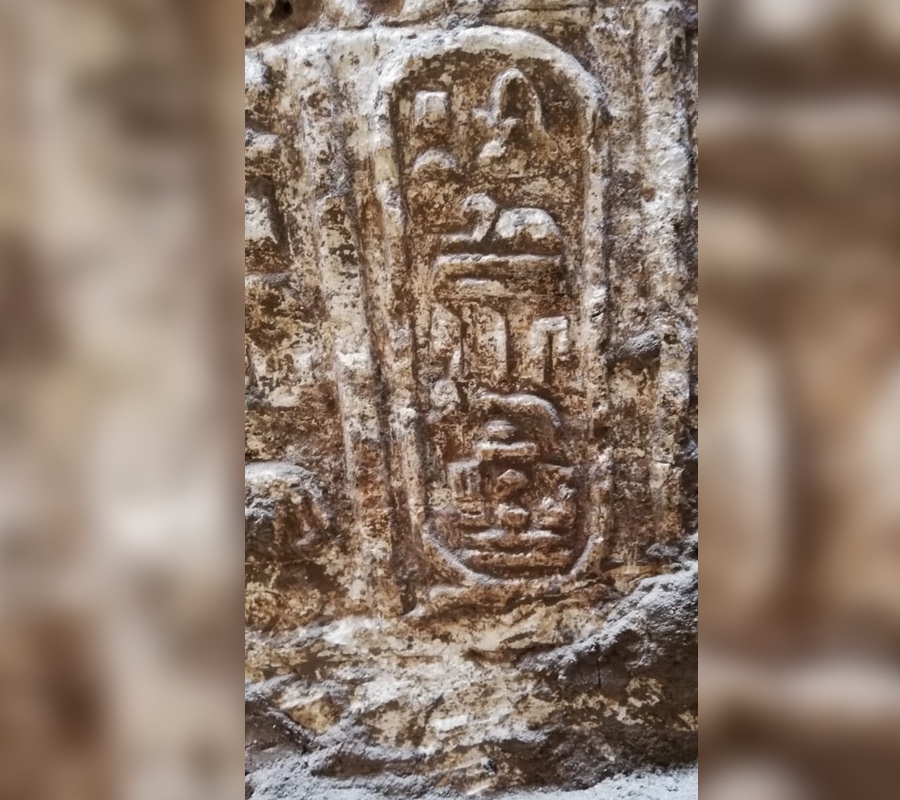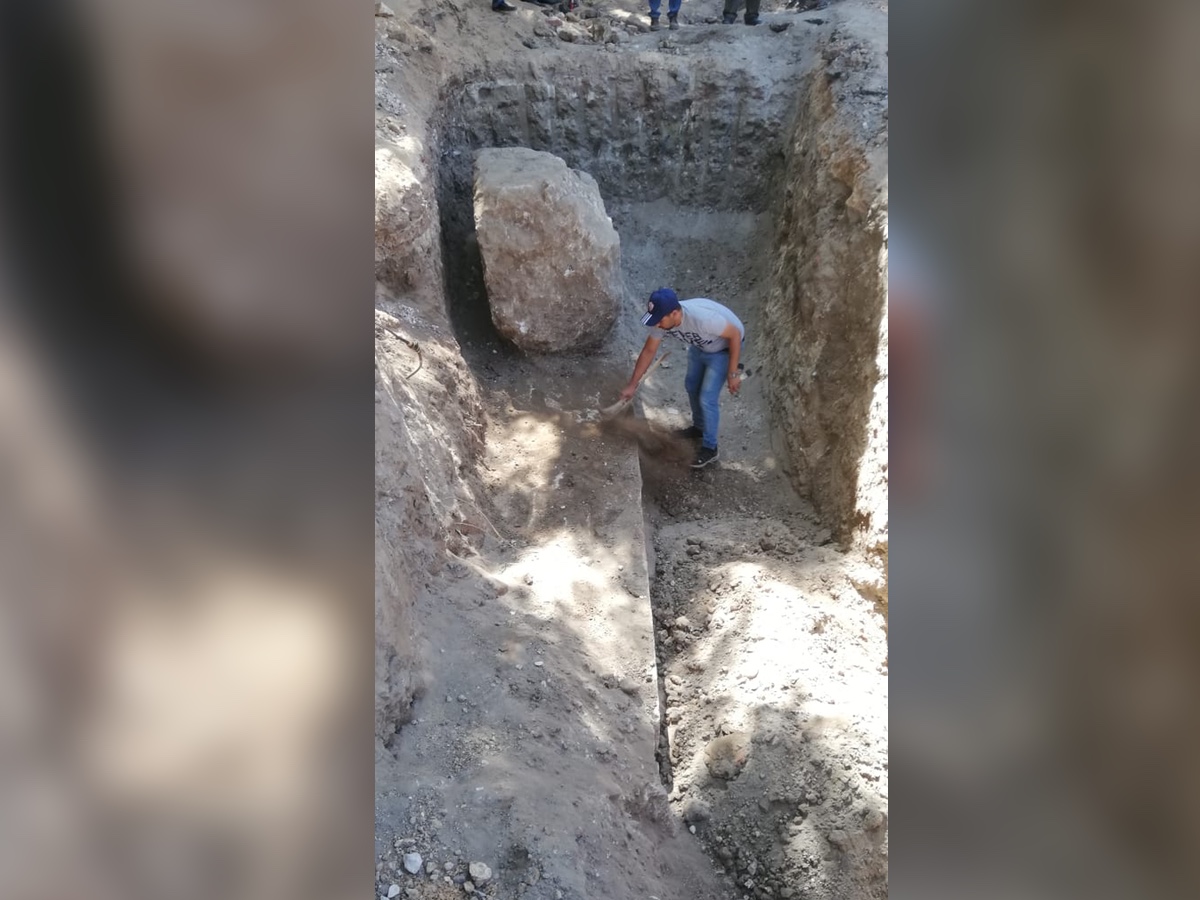Ancient Egyptian Temple from Reign of King Ptolemy IV Unearthed Along Nile River

Construction workers digging for sewer lines in the Egpytian city of Tama instead unearthed something incredible: an elaborately carved, 2,200-year-old temple from the era of King Ptolemy IV.
According to the country's Ministry of Antiquities, construction was stopped and archaeologists were called in to explore the find. So far, the team has discovered an east-west wall, a north-south wall and the southwestern corner of the temple, which is decorated with carvings of the Egpytian god Hapi, the god of fertility and of annual Nile River flooding, which enabled agriculture to flourish in the region in ancient Egypt.
These carvings show Hapi carrying offerings while surrounded by birds and other animals. Fragments of text mention Ptolemy IV, the fourth pharaoh of Egypt's Ptolemaic dynasty. The Ptolemies were Macedonian Greeks who ruled in Egypt from 305 B.C. to 30 B.C., often taking on the royal and religious symbols of earlier, homegrown Egyptian rulers. (The famous Cleopatra, who ruled Egypt from 51 B.C. to 30 B.C., was the last of the Ptolemies.)
Related: In Photos: Egypt's Great Terrace of God

The find was made in the city of Tama, just north of Sohag, Egypt, on the Nile's western bank. A region of the modern city called Kom Shaqao sits on what was once the capital of Upper Egypt's 10th district. In the past, that settlement was known as Wajit, according to the Ministry of Antiquities.
Ptolemy IV ruled Egypt from 221 B.C. to 204 B.C. He was the son of Ptolemy III and Berenice II, the latter a famed equestrienne who outlived her husband only to be poisoned at the behest of her son, who had been her co-ruler. Berenice had a violent past; according to ancient histories, Berenice had her first husband, Demetrius, killed after Demetrius and Berenice's mother had an affair. The assassination apparently occurred in Berenice's mother's bedroom.
Related: Family Ties: 8 Truly Dysfunctional Royal Families
Sign up for the Live Science daily newsletter now
Get the world’s most fascinating discoveries delivered straight to your inbox.
Ptolemy IV's reign was not a successful one. According to historians, the pharaoh was more interested in carousing and pretending to be an artist than in running a kingdom, and he supposedly outsourced most of the work of kingship to an ambitious priest named Sosibius. Under Ptolemy's reign, Egypt narrowly avoided losing its territory of Coele-Syria (now the region spanning parts of Lebanon and Syria) to its rival, the Seleucid Empire. Not long after this crisis passed, the Egpytian people began to revolt against Ptolemy IV's rulership, creating instability and deadly fighting that marred the last five years of his reign.
Ptolemy's wife (and sister) Arsinoe III gave birth to Ptolemy IV's heir, Ptolemy V Epiphanes, in 210 B.C. In 204 B.C., Ptolemy IV died, a fact kept secret by Sosibius and his associates for a year. Those same advisors had Arsinoe III assassinated, enabling them to control the rule of the now 5-year-old Ptolemy V. Ptolemy V spent much of his reign controlled by meddling regents and died suddenly in 181 B.C., but not before making the decree issued on the famous Rosetta Stone, which allowed modern archaeologists to decode Egpytian hieroglyphics.
- Bones With Names: Long-Dead Bodies Archaeologists Have Identified
- 30 of the World's Most Valuable Treasures That Are Still Missing
- The 25 Most Mysterious Archaeological Finds on Earth
Originally published on Live Science.


Stephanie Pappas is a contributing writer for Live Science, covering topics ranging from geoscience to archaeology to the human brain and behavior. She was previously a senior writer for Live Science but is now a freelancer based in Denver, Colorado, and regularly contributes to Scientific American and The Monitor, the monthly magazine of the American Psychological Association. Stephanie received a bachelor's degree in psychology from the University of South Carolina and a graduate certificate in science communication from the University of California, Santa Cruz.









